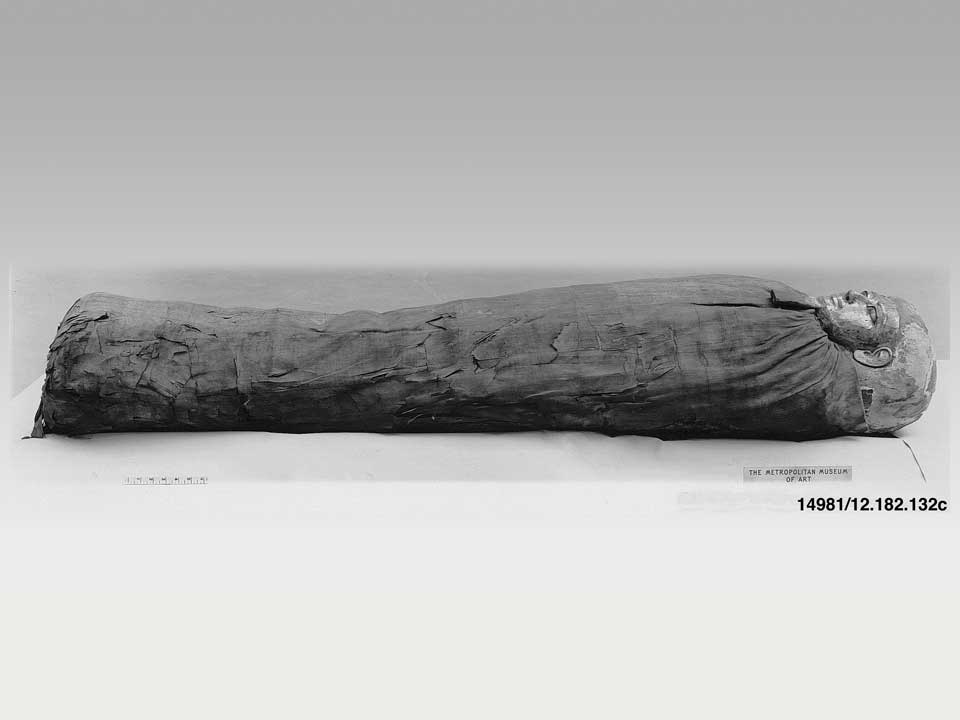Middle Kingdom Mummification

After spending four centuries apart, Upper and Lower Egypt once again unified, beginning the Middle Kingdom and introducing a variety of mummification styles. Some mummies had their organs removed surgically, some had them dissolved, and some kept them in place, only removing the brain.
When the organs were removed, it became more common for them to be placed in canopic jars, though the choice of which organs were preserved in this way was not yet standardized. The jars themselves also changed in appearance, becoming more decorated, and gaining lids shaped like human heads.
Middle Kingdom mummies would be covered in dark resin, a practice which became so standard that the word “mummy” actually comes from the Persian word “mumiya”, meaning wax or pitch, and referencing the resin.
For perhaps the first time, embalmers began to experiment with arm positions, sometimes leaving them at their side, and sometimes crossing them over their chest. The body would then be wrapped in spiraling bandages, and coved in many layers of sheets. Middle Kingdom mummies were bulky and padded to prevent damage during burial.
More commonly, mummies were decorated with elaborate masks, as well as flowers, amulets, and jewelry. Some even have been found wearing wigs and artificial braids, as well as prosthetic eyes and nose plugs to maintain the shape of the face.

At-A-Glance
- Methods of organ removal varied, but those that were removed were placed in canopic jars.
- Mummies were covered with a dark resin. The Persian word “mumiya” references this resin, and became the origin of the word “mummy”.
- Wrappings were dense and extensive, making mummies appear bulky and padded.


